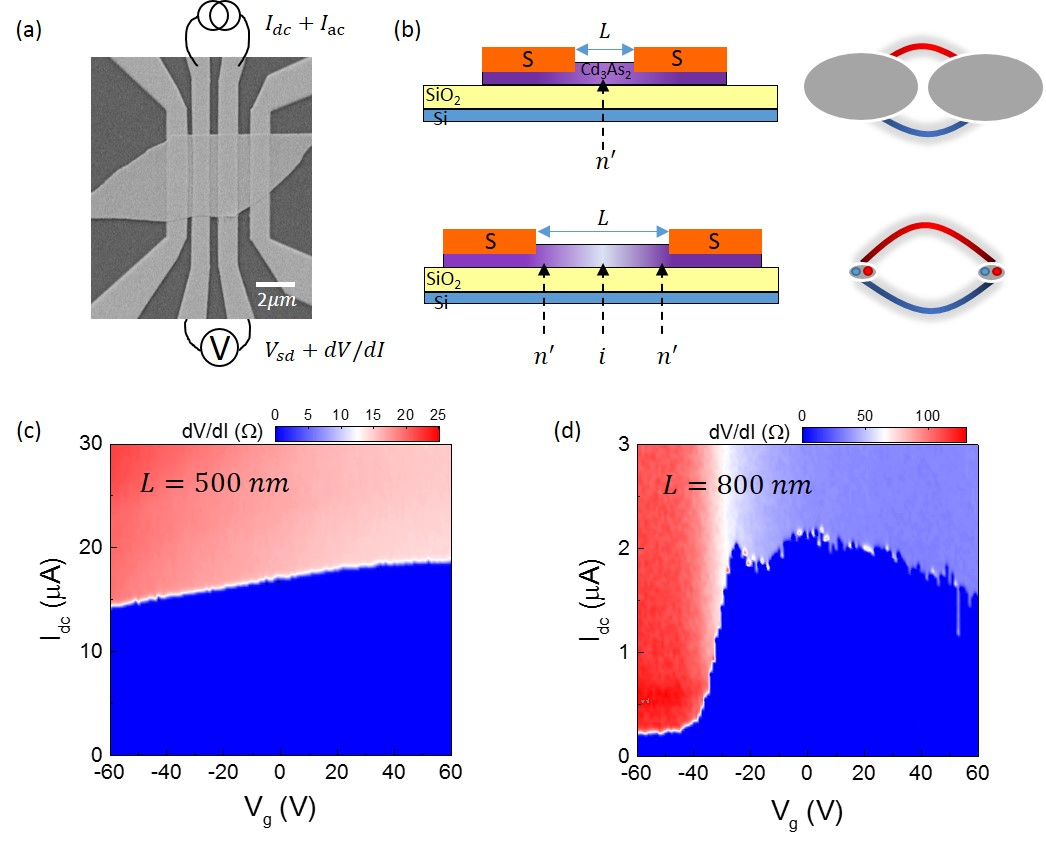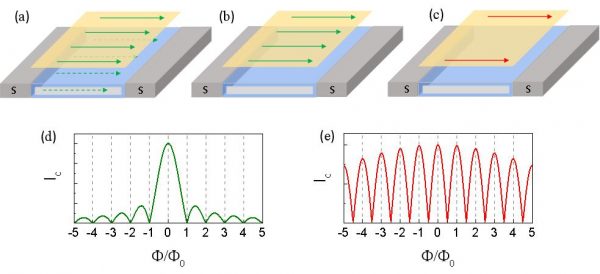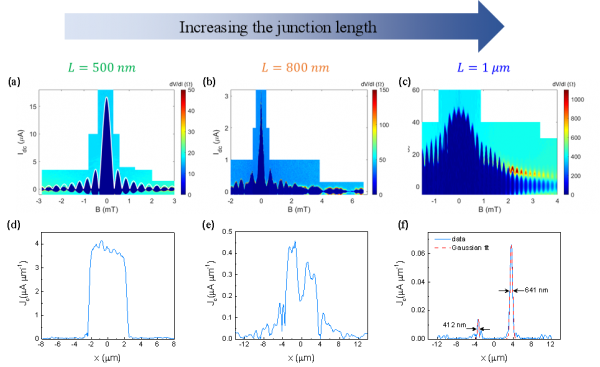The Institute of Quantum Science and Engineering (IQSE) has worked with partners at Peking University and the University of Twente to make significant progress in the quantum control of Dirac semi-metal superconducting hetero-junctions. IQSE is led by the Chinese Academy of Sciences (CAS) Academician and Dean Dapeng Yu, at Southern University of Science and Technology (SUSTech),

These results have been published in the high-impact academic journal Physical Review Letters (IF = 9.227) in the title “Reducing Electronic Transport Dimension to Topological Hinge States by Increasing Geometry Size of Dirac Semimetal Josephson Junctions.”
In recent years, the concepts of higher-order TI, higher-order topological semi-metal have been developed in line with progress in topological classification technology and the topological state. The higher-order is reflected in the bulk-boundary correspondence.
For a traditional d-dimensional TI, it has (d-1)-dimensional gapless topological states. For example, a three-dimensional TI has a two-dimensional Dirac surface state, and two-dimensional TI has one-dimensional helical edge states.
On the other hand, a d-dimensional n-th order topological phase holds gapless states with (d-n) dimension, with 1≤n≤d. For instance, a second-order TI in two dimensions has gapless corner states. Similarly, a second-order TI in three dimensions has 1D gapless hinge states.
After the concept of higher-order TIs, the concept of higher-order topological states was also extended to topological semi-metals. It has resulted in higher-order topological semi-metals. The appearance of higher-order topological states attracted extensive attention in the field of condensed matter physics and has made rapid progress in theory and experiments. However, the study of higher-order topological states, especially higher-order topological semi-metals, is still in its infancy.
As a paradigm, Cd3As2 is predicted to be a higher-order topological semi-metal, possessing 3D bulk Dirac fermions, 2D topological surface states, and 1D hinge states. However, it is difficult to identify them through transport experiments due to the mixed conduction channels.
In the previous work, the researchers found that the supercurrents carried by bulk and surface states in Nb-Cd3As2-Nb junctions respond differently to the magnetic field. By applying an in-plane magnetic field, the supercurrent from the bulk states is significantly suppressed at low fields. In contrast, the supercurrent from the surface states can survive up to higher magnetic fields. Moreover, the researchers observed the periodic supercurrent oscillations induced by the in-plane orbital interference effect of surface states. Relevant results were published in the high-impact academic journal Nature Communications (IF = 11.878) in the title “Fermi-arc supercurrent oscillations in Dirac semi-metal Josephson junctions.”
In this work, the researchers realized the modulation of supercurrent carried by 3D bulk to 2D surface states, and finally to 1D hinge states, by increasing the junction length. These topological states have different superconducting coherence lengths, allowing one to distinguish their properties when changing junction length.

Fig. 1. The realization of supercurrent carried by 3D bulk to 2D surface states by increasing the junction length
For the short junction, the channel between the two superconducting electrodes is highly electron-doped by Nb deposition. Thus the bulk states are dominated, and the surface states are indistinguishable from the bulk states. It results in a monotonous increase of critical supercurrent as the gate voltage is turned from negative to positive. For a long junction to exceed the superconducting coherence length of the bulk states, the bulk supercurrent is significantly suppressed. The surface states can still conduct the supercurrent due to the longer superconducting coherence length. The electron doping effect is relatively reduced in a long junction, giving rise to a surface dominated transport. In this case, the critical supercurrent develops a peak near the Dirac point. Therefore, the dimensional reduction from 3D to 2D is realized.

Fig.2. The supercurrent distribution in Josephson junctions and corresponding supercurrent interference pattern in a perpendicular magnetic field
The 1D hinge states can be verified by the supercurrent interference pattern under the perpendicular magnetic field. When the supercurrent flows uniformly through the junction, it results in a standard Fraunhofer interference pattern. While in the case of supercurrent flows through the 1D hinges, a superconducting quantum interference device (SQUID)-like pattern should be observed.

Fig.3. With the increase of junction length, the supercurrent interferences change from a Fraunhofer pattern to a SQUID-like pattern.
The researchers found that when the junction channel length is increased, an evolution of supercurrent quantum interferences from a standard Fraunhofer pattern to a SQUID-like one is observed. The SQUID-like interference pattern indicates the supercurrent flowing through the 1D hinges, which confirms the higher-order topological hinge states in Dirac semi-metals.
The results of this research provide numerous opportunities for in-depth studies into the topological surface and hinge states in Dirac semi-metal.
IQSE postdoctoral researcher Caizhen Li and PKU postgraduate Angi Wang were the co-first authors of the papers. The correspondent authors were PKU Professor Zhimin Liao and the University of Twente Assistant Professor Chuan Li. IQSE Professor Dapeng Yu and the University of Twente Professor Alexander Brinkman contributed to the supervision of these works and data analysis.
Both works were supported by the National Key Research and Development Program of China and the National Natural Science Foundation of China (NSFC).
Paper link:
https://www.nature.com/articles/s41467-020-15010-8
https://journals.aps.org/prl/abstract/10.1103/PhysRevLett.124.156601
Proofread ByXia Yingying
Photo ByShenzhen Institute of Quantum Science and Engineering, Qiu Yan